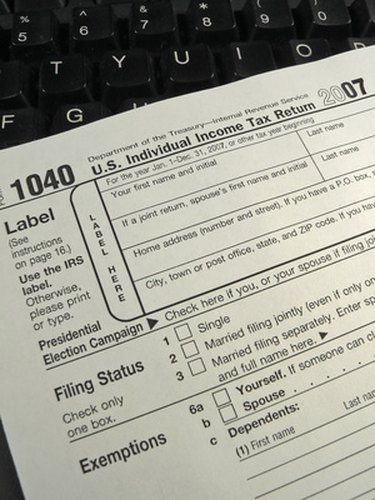how to become an independent consultant

Paying taxes as an independent consultant requires the completion of several additional forms when you file your taxes.
The Internal Revenue Service (IRS) generally considers an individual an independent consultant or contractor if he or she controls the means in which work is accomplished. The IRS treats independent consultants as self-employed for tax purposes. As an independent contractor, you generally must pay self-employment tax and report your business income and deductions on Schedule C of the individual tax return, Form 1040.
Step 1
Complete Schedule C or Schedule C-EZ as applicable. You may use the C-EZ if you had $5,000 or less in expenses and meet several other qualifications listed in the form's instructions. The EZ Schedule allows you to list your revenues and expenses in totals rather than by line items. If you do meet all of the requirements for the EZ form, then you must file the full Schedule C.
Step 2
If filing the full form Schedule C, you will need to complete Parts I and II, Income and Expenses. Use Part V to report additional expenses that do not fall into any of the preprinted categories. You will only need to complete Part III, Cost of Goods Sold, if you have inventory. Complete Part IV, Information on Your Vehicle, if you do not file Form 4562, Depreciation, and claim a deduction for automobile expenses.
Step 3
Determine your self-employment tax. If your net income is less than $400, you, are not required to file Schedule SE or pay any self-employment tax. Transfer the net profit or loss from Schedule C, line 31, or Schedule C-EZ, line 3, to line 2 of Schedule SE. You will file either the short or long form, depending on if you meet the criteria listed in the flowchart on the first page of the form.
Step 4
Enter one-half of the amount of your self-employment tax on Form 1040, line 27. The IRS allows one-half of your self-employment tax as a deduction to arrive at adjusted gross income.
Tip
If you are being paid as an independent contractor, you may need to pay quarterly tax estimates to the IRS using 1040-ES. Generally, if you expect to owe more than $1,000 in taxes when you file your return, you should be paying estimates. Estimates are due April 15, June 15, Sept. 15, and Jan. 15.
If you have a home office, you may able to claim an additional deduction on your Schedule C for a portion of your utilities, real estate taxes, mortgage interest, etc. Use Form 8829 to report an office-in-the-home deduction.
Warning
This information is provided for informational purposes only and is not to be construed as specific tax advice. For tax advice, please consult with an accountant or other tax professional.
-
1099 forms
-
Form 1040
-
Schedule C
-
Schedule SE
how to become an independent consultant
Source: https://www.sapling.com/7197719/declare-taxes-independent-consultant
Posted by: connersooking.blogspot.com

0 Response to "how to become an independent consultant"
Post a Comment